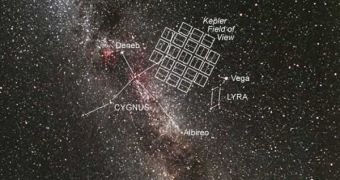The NASA Kepler Telescope is an observatory designed specifically for detecting exoplanets far away in the Universe. Its sensitive instruments ensure that it can detect very small space rocks, about the size of Earth, which is where astronomers believe life has the highest chances of developing. The telescope has a field of view encompassing more than 156,000 stars, and its managing team was supposed to release important datasets on them this June. However, a NASA panel allowed them to keep a lid on things for the time being, Nature News reports.
The advisory panel convened by the American space agency said that the Kepler team should keep data on some 400 “objects of interest” a secret, at least until February 2011. These objects are most likely exoplanets that revolve around their parent stars in what is known as the habitable zone, an area where temperatures are right to allow for the existence of liquid water. At this point, astrobiologists believe that the chemical is one of the prerequisites for the development of lifeforms.
The main reason why NASA allowed for the Kepler data to be concealed is to give its scientists more time to verify their findings in depth. The allotted time will also be used to eliminate false positive results, and to write scientific papers detailing the findings. But another reason is that this approach will secure an important place for NASA astronomers in the scientific literature, given that they will be the first to describe the existence and traits of Earth-like planets around other stars. Moreover, the agency is unwilling to take any more chances of its experts publishing inaccurate data, and then retracting them.
Over the years, a number of scientific papers in this field of studies have been published prematurely, and then had to be shamefully retracted by their authors, when their conclusion did not hold up to rigorous scrutiny. According to NASA Ames Research Center expert William Borucki, the principal investigator of the Kepler mission, 328 more candidates have been spotted as of last week, but the team still needs to figure out if they are false positive results, produced by interference from cosmic structures such as binary star systems.

 14 DAY TRIAL //
14 DAY TRIAL //